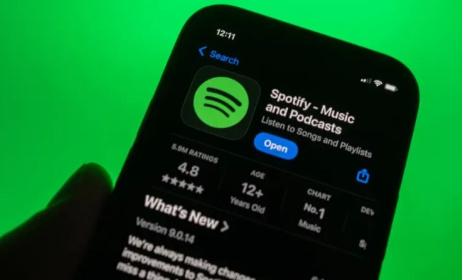Spotify reports mixed Q2 2025 results as global user base grows but profitability slips
Spotify has reported strong user growth for the second quarter of 2025, with the streaming giant reaching 696 million monthly active users (MAUs), including 276 million paid subscribers, both reflecting double-digit year-on-year growth and exceeding company guidance.
 Spotify generated $4.8 billion in total revenue during Q2, representing a 10% increase year-on-year, but unchanged from Q1 2025 and below projections.
Spotify generated $4.8 billion in total revenue during Q2, representing a 10% increase year-on-year, but unchanged from Q1 2025 and below projections.
However, despite this user surge, the company posted a net loss of $99.2 million, down from net income of $259.5 million in the previous quarter, as operating expenses rose and revenue remained flat.
Spotify generated $4.8 billion in total revenue during Q2, representing a 10% increase year-on-year, but unchanged from Q1 2025 and below projections. Paid subscriptions once again dominated, accounting for $4.3 billion, up 12% year-on-year, while advertising revenue recorded 8% quarterly growth, but a 1% decline compared to Q2 2024.
“However, as I look at our progress, the one area that hasn’t yet met our expectations is our ads business,” Spotify CEO Daniel Ek said. “We’ve simply been moving too slowly, and it’s taking longer than expected to see the improvements we initiated to take hold. It’s really an execution challenge, not a problem with the strategy.”
Spotify’s chief business officer, Alex Norström, echoed the sentiment, noting that the platform had “grown monthly active advertisers by more than 40% year over year.” His comments follow the recent departure of global advertising head Lee Brown, who has since joined DoorDash.
While the user base continues to grow significantly in emerging markets, revenue remains disproportionately concentrated in developed regions. Europe accounts for 37% of total subscribers (102 million), and North America follows with 25% (69 million). In contrast, regions outside Europe and North America now account for 57% of MAUs, up from 55% in Q2 2024.
Operating expenses rose 8% year-on-year to $1.1 billion. Although Spotify reported operating income of $468.6 million, an improvement over the same period last year, it declined compared to Q1.
Looking ahead, Spotify expects to add 14 million new MAUs in Q3 2025, including five million paid subscribers, but projects flat revenue at $4.8 billion.
“That could be a little bit lighter than you may have anticipated,” Ek admitted, but stressed Spotify’s commitment to long-term growth over short-term results.
The company also announced that it has expanded its $1 billion stock-buyback programme to $1.9 billion, with authorisation to repurchase shares through April 2026.
Meanwhile, executives provided little new detail about the long-awaited superfan subscription tier, which had been expected to debut in 2025.
“And in music, of course, you know, we’re reliant on our partners to a certain degree. But you have to know that superfans are everywhere and not just in music,” Norström said, while promoting Spotify’s audiobook offerings for highly engaged users.
Despite the earnings miss and net loss, Spotify shares, which were trading just above $700 before the report, fell to around $630 in early trading, a 12% drop. However, the stock remains up 90% compared to the same period last year, buoyed by investor confidence in Spotify’s pivot toward profitability following a pause in aggressive acquisitions.































Comments
Log in or register to post comments